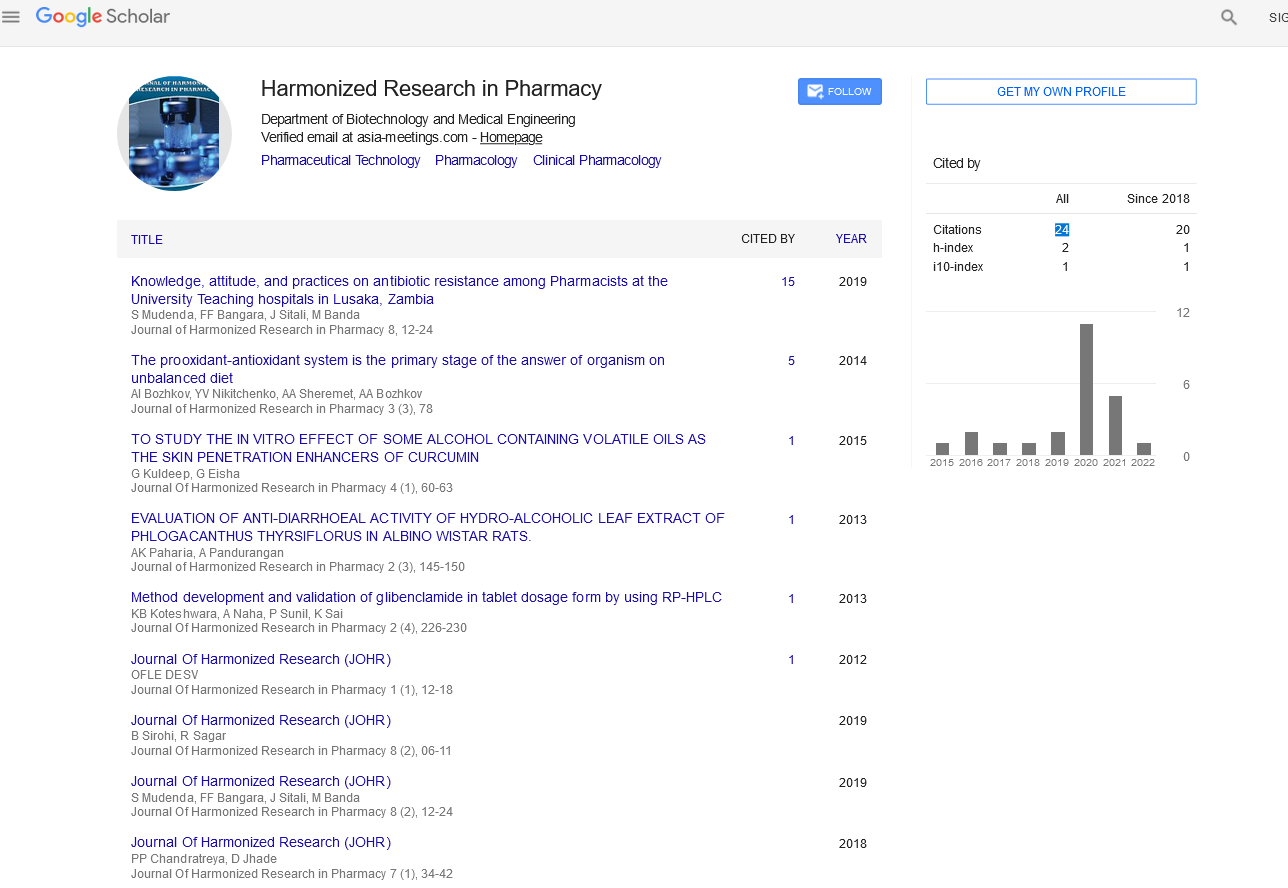EVALUATION OF ANTIHYPERTENSIVE AND ANTIGLAUCOMA ACTIVITY OF ANDROGRAPHIS PANICULATA AND ACACIA ARABICA USING RAT ANIMAL MODEL
Abstract
Author(s): Md. Salahuddin Ansari* and Pankaj Sharma
Cardiovascular diseases are the leading cause of death globally. The medicinal value of plants lies in some chemical substances that produce a definite physiological action on the human body. Androgr aphis paniculata is used traditionally as a remedy against common cold, dysentery, cardiovascular disease and Acacia arabica is used for the treatment of asthma, cough, and ophthalmic. Hypertension induced by adding 1-2 % NaCl to drinking water for 3-6 months and injecting Deoxycorticosterone acetate-induced (10 mg/kg). Glaucoma is induced in rabbits by intraocular injection of alpha-chymotrypsin. Male rabbits weighing about 2 kg will be pretreated with 10 mg/kg i.p. indomethacin to prevent the otherwise immediate onset of inflammation and then slightly anesthetized with pentobarbital to eliminate any nystagmus. The right eye is anesthetized topically with 2% lidocaine. The interesting fact is that low dose combination of AP and AEP in highly effecting in decreasing MABP but neither High dose AP nor High dose AEP alone was achieved highest Decrease in MABP. The diabetic rats treated with the EEME (250mg/kg) showed a significant (p<0.05) reduction in fasting serum glucose level as compared to 0 day after 7th, 14th and 21st day treatment. The fall in serum glucose level was gradual and consistent. Keywords: Andrographis paniculata, Acacia Arabica, Hypertension, Glaucoma

Google Scholar citation report
Citations : 147
Journal of Harmonized Research in Pharmacy received 147 citations as per google scholar report









